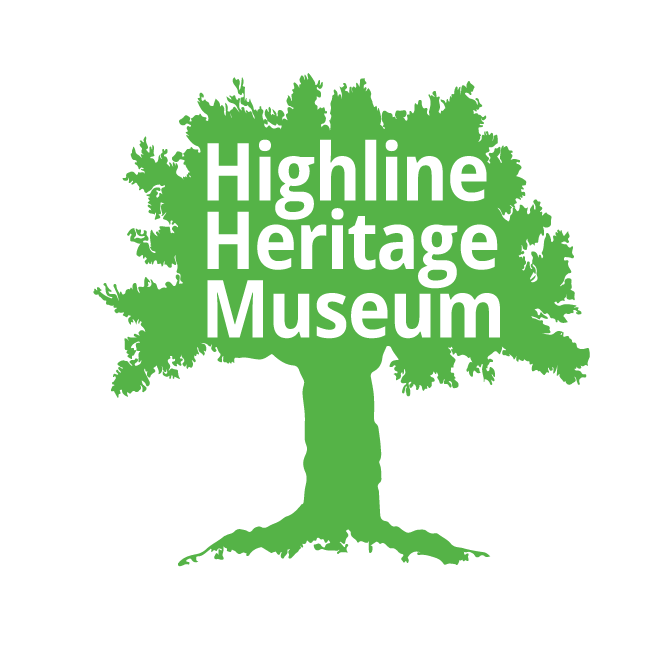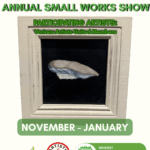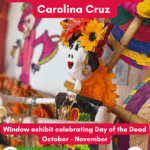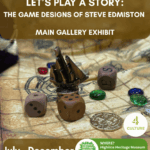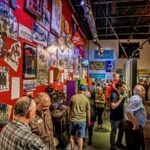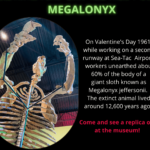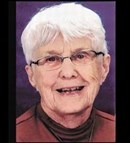Interview with Bobbette Keeler McIntyre and Fern Keeler McKenzie
October 8, 2003
Interviewer Gene Pugh
I was born in Seattle. My folks moved out here in the early 20’s. I’m not sure what year it was that the folks bought the property. They may have purchased it a year before we moved out here. The doctor that delivered me, Dr. Grover, had a cabin at Seahurst at the end of the railroad tracks. And he wanted some plumbing done, so Dad came up to do the plumbing. The property was bought from an H.M. Nelson. Nelson had platted out a lot of the area in small lots, from Ambaum all the way down to First Ave. Originally I think they (our folks) had three lots, then they added the one over by the Dahls. I’ve never seen the deed. This was near First Ave on SW 152nd. There was a music store at the corner called Second Ave for many years. I think there were many large 3-story houses on the south side of 152nd beyond 8th Ave.
Burien started at Ambaum, started at the south end of Lake Burien and ran east to First Ave South. Generally what happened in the summer time was that families from Seattle shipped their servants and kids and wives to Burien. The men stayed in Seattle except during the fall when there were great hunting parties. I got that information from “Many Roads to Highline.” I think Burien started when the railroad came in. We called them streetcars, not trolleys. I think it was a logging area and a summer camp for many people. There was a lot of logging. I can remember the tracks coming down Ambaum, crossing 152nd, and probably a block and a half beyond. That’s as far as it went. There was a sawmill there at one time but it burned down. I think that was at 153rd. As long as I can remember Bunge Lumber was at the corner of 152nd and Ambaum. They had a lumberyard behind them. The next place was a marsh, real soupy. To get to a house, or a business, they had a raised sidewalk, up on piers. It looked like a train stop. I had toe-dancing lessons there for a while. I left my dancing shoes to my younger sisters.
We had 5 girls in the family, no boys. Boys were terrible. They threw rocks at me and my horse. I didn’t like boys. The horse was mine. I took care of it and rode it. I got it because Daddy was working at Tobias’s, at the wet end of the lake. He had Seattle Tent and Awning in Settle. They had a manservant, a Negro, who loved with them. Dad knew I wanted a horse. So Dad traded plumbing work for the horse. It was an old broken down, wind-broken horse, wheezing. The horse was named Star. Tobias’s had a daughter going to school in Seattle. When she and her friends came out they used to have two horses to ride, until I got Star.
I think for transportation a lot of people had old tin Lizzies. People who lived along Ambaum often worked along Spokane and on the waterfront. They could have a place in the country where they could have a few chickens and some land, and raise their families. Everyone had a dog, so they could roam all over. There were more craftsmen here who could do things for themselves.
On the wet side of Ambaum, across from the swamp, were buildings that to me were huge. Some of the buildings were not being used. There was a dry goods store, a grocery store. I think they had some kind of refrigeration back there, because I can remember I did not like the smell back there and I think it was something they used for making ice. The meat counter was ‘way back a mile’ to the back of the store., That was Wamsley who owned the store. Just west of that store there was an empty section and I remember, just one time, they had a moving picture. You saw one part of the movie and then they had to rewind and then you saw some more. It was a very steep seating arrangement on benches. I only went to one show. Then there was a fire that destroyed the building. South of the building was the Salisbury Drug Store. The railroad tracks took off and made a curve west just behind Salisbury’s store. There was a cafeteria and years later a shoe shop in the same building.
Behind the tracks was where Ivan Philiips kept his fire engine and he did a lot of auto repair work. He had a brother who had learned to fly during the first World War. He had an airplane so every once in a while we’d see this crazy guy up there doing things. I can remember when that dirigible came over, about 30 or 31.
Our house wasn’t much of a house when my folks got it. It was a little three-room house made out of green lumber, probably put together in the spring, and covered with tar paper. After a hot summer the tar paper split and you could see between the shiplap. I don’t know how we got through the winter. We liked to get around the wood and coal stove that we had. There was no furnace in the house. It wasn’t long before he started building, and he had a brother who came out and helped him. That brother, Charlie, and my dad worked at the shipyard as steamfitters before Dad got into the plumbing business. I always thought it was funny that Charlie had a pair of pants that he would wear when he worked. And he could stand them up by themselves because they were made of some heavy material.
There were not many trees on our lot, they had cleared the lot before. About an inch below the soil three were tree trunks that they had sheared off right down close. Dad was forever trying to dig out those stumps. He used to have a team of horses that came out to help him. This mad had a team of horses behind Wansley’s store. They looked like the big logging horses. They might have belonged to Blackie. But as far as I know Blackie didn’t have horses. He lived right down below where the hospital is He had a little spring down there. He had a little house, one of those where the board it up about three feet and then they have a tent on the top of it. That’s what he lived in. He was very nice, didn’t mind if we stopped thee to get a drink of water.
There was a little stream that came from Lake Burien. We stopped by there when we were blackberry picking. The blackberry picking spot was where the hospital now stands on the upside of the street. It had been logged off so that the blackberries started. Dad would take us down there on his way to work and dump us off. And then when we got our buckets full we would walk home. We never saw a bear or a deer.. On the down-side of Sylvester it was damp. You can still find the skid roads down there. They used to take the logs along Sylvester Road all the way around to Three Tree Point (where the rich people lived), and ship them out on boats.
People lived at Three Tree Point only in the summer. Even the little store there was closed in the winter.
We had chickens for our own use but we didn’t have a chicken farm. We did have some rabbits in hutches that were built by the people who were there before us WE didn’t have many rabbits because Dad did not like to kill them. He could chop off the heads of the chickens but killing a rabbit was a little different. We did not have a cow, not many people had cows. We did have a goat once. Sometimes the Sunnydale goat farm gave us a goat after they had been neutered. We had a lot of fun with them. One day my goat disappeared. I went into the garage and I saw something sticking out. My Dad had had the goat killed, so we had “lamb” for dinner that night. We used to have to chase that goat all over the place. He ate al Mama’s raspberries. He would eat anything. They make good pets. You can’t teach them anything, but you can pet them.
We went to Sunnydale School. The kids who lived west of 4th Ave went to Lake Burien School. I think Sunnydale was established before Lake Burien. I heard that they were one of the first schools in the state to have hot lunches for the kids. We had no buses. We walked. There was a Mr. Dimmit. Mr. Gilbert became principal when I was in the seventh grade. That was about the time that Esther Gilbert got polio. My first grade teacher was Miss Keller, she was right out of college. We were in a building right up the steps from the school and they had the lunchroom there. Mr. Morris and his family lived in the back part of that building. Cynthia and Gwen were the daughters and Mr. Morris was the custodian.
I saw George Love the other day. I hadn’t seen him for so long. They lived in back of where the gravel pit was, between Fourth and Sixth. There was a lane going down the eat side of the gravel pit, where the trucks used to come in. They didn’t have much of anything. He was a veteran, had been gassed during the war. I palled around with of the daughters. There was Yvette and Claire, Florence, Jeanie and George. He must have been on a pension cause I don’t think he ever worked.
Probably Florence Love was my best friend. We walked to school together every day. Another friend was Gertie who lived right across from the high school. They had two or three long houses of chickens. Her mother would curl her hair every morning like Shirley Temple’s hair, made with rag curls.
I (Fern) was born in 1915 and Bobette was born in 1919. We fought with one another. We walked to school with a whole group from there, so they were considered your friends. I met a person the other day who said, “Oh, I remember you Keeler girls. You used to throw rocks at us when we were going to school.” I can remember one time when somehow or other (for Show and Tell or something) Anabel came to school with me. And sometime during the day somebody said they were going to beat up on us when we were going home. I think it was Art Kleitsch, who was la little bully who had big brothers to back him up. So I thought, “What am I going to do?” I probably didn’t do a bit of work that day. I finally decided that I’m not going to walk home that way I usually do. I went down DM Way to 160th, walked to Five Corners, then north on First Ave South to a little trail that came into our yard. They weren’t going to beat me up!
To go to school we usually walked down 152nd to Des Moines Way, right past Tommy Hulse’s place and by that big tree, a weeping willow. He also had a quince tree. I remember going down and asking if we could pick some quince. We used to cook the quince and then us it to set your hair. We used to be able to buy the seeds at Salisbury’s, and then you’d cook them up and make a gel for stiffening your hair.
We went to Sunnydale until the eighth grade, and then to Highline High School. I was scared to death of one of the teachers at Sunnydale. She was probably a very sweet person, but she started the school year by threatening everyone. She was in the second grade. The first grade was in the other building The second and third grades were combined. The other half of the third grade was combined with the fourth grade. If you were doing well they put you in the combined class, thought some of it would rub off I guess. Stillwell was one of the teachers in grade school. Gibson was one of the high school teachers. And of course Cyrus Gilbert, a great guy. We always liked him. I had some trouble out on the playground one time and it had upset me. I think it was with Mary McDonald. Joe liked me, but Joe liked Mary better than he liked me, and I was mad when I went to class and I was crying. Mr. Gilbert asked me what was the matter and I said, “None of your damn business.” So he said, “Do you want to go stand in the corner until you quiet down.” So I did. But he was nice. I remember that at noontime we had ukeleles. Florence Love had one and I had one. We had a much longer lunch. We’d meet with Mr. Gilbert, who played the banjo. And we all had music together. It was rally fun. He came up to Highline later, while I was up there.
I got into trouble a lot by myself.
At Sunnyydale there used to be an outhouse, quite a way back. Later they put in some inside toilets. There was a huge building and in half of it they put up modern facilities. But they would freeze up in the winter because there was no heat or insulation in the building. The other end of the building held huge stacks of wood for the furnace that heated the school. All winter they would be hauling it out to the furnace. There were four rooms in the school and the heat came up through a vent to those rooms. I don’t think the heat was adjustable. We always had a sweater on in the school.
They had a fire escape on the outside of the school. But I never have found out why they turned that building around They re-did the thing, or maybe they just moved the doors. The fire escape was just like any other stairway with wood steps all the way up, on the outside of the building.
Sunnydale had a lot of playground equipment. There were swings and bars that you could play on. I don’t think kids got hurt on them much. There wee swings and bars that you could play on. I don’t think kids got hurt on them much. But somebody got hurt and they got sued, so they took them all down.
At Highline High School there used to be a school store on the first floor. It was called the bookroom because that’s where they kept the extra books. That was one of my problem spots. They gave me the chore of minding the store. I think they paid me 50 cents a month or something. You could buy pencils and paper there. Some boy came along and wanted to match pennies. As far as I was concerned I would match pennies. They called me to the office because I had been gambling. I was so embarrassed. I was not gambling, just matching pennies.
Later there was a lunchroom in the basement. During lunch hour you walked along the hallways with your with your boyfriend. I went with a boyfriend who was a letterman, so I wore his letterman jacket. It was very smart. I should donate that jacket to the museum. In high school, besides studying we were interested in…mostly boys. I kind of liked school. I was so lucky that I had a boyfriend who helped me with geometry. We had algebra too ad I didn’t care what “x” meant. He was interested in sailing so he needed to learn geometry. So I nearly failed both of them but he helped me.
We lost a lot of things when our house burned down. We moved down south of the airport to another little shack, somewhat similar to the place on 152nd.
I had Mr. Wiggins, who was also the coach, taught botany and a general science. I can’t remember who the French teacher was. I took German from a teacher that had come out from the UW and he called everybody “Miss” or “Mr.” I got in trouble with him because there was a boy sitting in front of me who had curly hair little tight curls, and I kept playing with the curls. I got called on it one time. That was Gummie Huhn. He and Tom Hulse were good buddies.
I knew Norton Smallwood. He lived near where the Indian Trail runs along Three Tree Point.
At Sunnydale school I had Miss Allen. Martha Allen was in eighth grade, her sister taught me in first grade. I had Miss Davis who taught me English. She was just the sweetest teacher. I didn’t like to get up in front of a crowd, but one time we were acting out MacBeth. I think I was one of the witches, but I just completely blanked out. Miss Davis said, “Oh, that’s okay, you can just go sit down.” She was a nice gal.
We could tell there was bootlegging going o in the area because you could smell the mash. I’d be out riding my horse, and we could smell the mash. When I was in high school the boys always knew where you could go to get wine. I never liked wine because I had gotten sick on it one time when Annabel and I were taking care of the younger kids. My dad had been given a lot of pie cherries and had decided to make wine. Now, here was a man who could not take a drink or he would get sick. Well, my folks had gone to a dance at the Masonic Temple. Anna and I had decided to test the wine. I got sick immediately, Ann didn’t, but she had such a hangover the next day. So my dad set the jug on the table, and she took one look at it and dashed out.
The bootlegging: right next to us was a house where no-one had ever lived, to our knowledge. It evidently belonged to Mrs. Dahl. It seems they brought in liquor from Canada by water. Then people from Seattle who knew about it would bring their cars out and pick it up to distribute it. They would bring it in to Normandy Park, which was known as Miller’s Beach, or Miller’s Creek. Through the grapevine the information got around.
A couple from Kentucky owned the house that my husband and I bought just south of the (present day) airport. You can’t tell me that it was necessary to build a fence to screen off the semi-forested area where there’s a house with a chimney. That tells me they’re bootleggers. The revenuers came one time. Mr. Dahl had a nice wife named Deborah (I thought that was such a pretty name.) I don’t think they made any liquor in their place, but anyway the revenuers came and broke everything in their house that would hold more than a quart of liquid. They were actually looking for her brother. When the revenuers came, they told my dad to keep the children away because there might be shooting. We stayed in the house while they went into Mrs. Dahl’s house. Mrs. Dahl was a former Madame. I don’t know how she lost her nose but she had no nose, it had been operated on. She wore a rubber piece and a veil over it. She was a good-hearted person. She married her husband in Alaska, and brought him back with her. I don’t think he ever drew a sober breath. He was drunk from then on. He was actually a good carpenter, built a good solid house there. She had a parrot too who said “Polly wants a cracker.” She was a nice old gal, had a bad reputation but a nice gal.
The Depression really messed up Burien. The timber was gone. The mill had burned down. The Copeland family had a house on Ambaum, just before you get to the Log Hall. Well, just beyond there, somebody decided they were going to have a rodeo. But there was no fence around it. They brought all this stuff; cowboys, bucking broncos and ll. It didn’t last long.
They did have parades in Burien once in a while. There was always a Fourth of July parade. I cannot understand why they have a strawberry festival in Burien now because no-one ever raised strawberries commercially.. I n Sunnydale a Japanese family did grow strawberries, up on the hill (toward the airport) because I used to pick them there. Mr. Dunkle grew raspberries and strawberries up on the hill. He had been gassed during the war. Wilcox had a farm there, but the old man didn’t do any work. I picked currents, raspberries, loganberries, and apples. There were lots of Wilcoxes, Carters and Furmans, all connected. There was also a Liekus.
This one girl, named Margaret, had learned to drive a Model T.. In her barn they had dill pickles in a big barrel and we could go and help ourselves to the dill pickles. It was right next door to where the McDonalds lived. Later she had a little dry-goods store on 99 at about 158th. She could drive a car and that was something in those days. Women didn’t drive cars, “didn’t have the ability,” but she did.
Dad had a shop in Seattle. The used to have movies and he would pick up the movies and bring them out at night so it gave the people a chance to see movies. The theater in Burien had burned down and the Den Burien hadn’t been built yet. And he would bring out big posters and put them up for next week. I wish we had saved some of those posters. Gabrish used to run the projector, and all of a sudden the film would break and the lights would go on to fix it. Every boyfriend would get back on his own side of the chair. The building where they showed movies was on the south side of the school. It had been a variety of buildings before the school took it over. At one time it was a feed store, I know, and a grocery store at some time. Stennings had a grocery store across the street. Sables ahn a little store in there. Peters had a store at the corner of Des Moines Way and 152nd, in the little triangle. Hulses were up the road from Peters, on 152nd, the south side of the street. All the way from South Park within maybe three miles of the starting point, there’d be a gas stateion and a little store. There used to be a Tom and Jerry’s store at the intersection of Ambaum and Des Moines Way. These places disappeared later. I think maybe because you didn’t have to go to the bootlegger to get liquor. I think it was the same way from Riverside to White Center, there’d be stores along the way so you didn’t have to go too far. People used to walk to the little Mom and Pop stores.
Tamesa lived right back of the Sunnyydale school. He had two daughters, Tamia and Miyaka. Every Saturday he took his kids to Seattle for Japanese school. George Kumasaka also took his kids to Japanese school on Saturdays. They learned judo and Japanese culture. I remember Ichiro because I was in a photography club in school. We took snapshots. One of the things I worried about afterwards: We took a picture of a football dummy that they used for tackle practice. And so we pretended that Ichiro was going to be hung. I had that picture for years. And after the war I was so sorry that I had taken the picture, because he was a nice little Japanese fellow.
That reminds me of a Japanese fellow that we have living here. He was very lonely I think. He had a son in the area. His name is Tai and he was born on Christmas. The other day I said that I hadn’t seen Tai lately. The others said, “Oh haven’t you heard? He decided he wanted to go back east.” He had gotten down to the airport got on the plane, but didn’t tell a soul. He had lived on the east coast and he wanted to see his daughter who lives there. Some of the people here would not eat with him because his Japanese table manners offended them. So I think he was kind of lonely.
My first job was picking strawberries, with all my friends. I went to work at Penney’s on Second Ave while I went to college. I was in the hosiery department. I had to run by hand through every stocking to show them the colors. I rode the bus to town.
The old trolley ran before the buses came in. I can remember going with Mom down the big hill, which got very slippery in caterpillar season. The trolley went along the waterfront across Spokane St, and it swayed enough to make you seasick. The tracks were built for logging cars so they didn’t have to worry about springs for a comfortable ride. It went past the Bemis Bag Co. the boys liked to play tricks like pulling down the trolley, and laying pennies on the track.
It used to be that my dad would send us up to Salisbury’s Drug Store for tobacco, and they always gave it to us. Nowadays they would not do that for anything. There was a soda fountain at Salisbury’s. We used to stop there on the way back from church, (designated as the Community Church, not Presbyterian). We would save part of our church money. But we would rather to spend it at Dad Wright’s store because he had bigger ice cream cones than Salisbury’s. One time Ann and I went to the soda fountain and ordered a soda, but we didn’t have any money. He had to “put it on the bill” Dad had a running ill mostly for Prince
Albert (tobacco). In those days the little stores would charge anything, even penny candy.
There was a little grocery store on the east side of the bakery (152nd near Ambaum). They had barrels with food in them and there were two men who sat in there, laid back like the pictures showed. I think they had a post office in there too.
Then to the east of that there was Sheehan’s dry goods store, and behind the store they had a public bathroom, the only place in Burien you could go. The daughter and son were both good looking, so was the father. They lived right in back of the store for a while. Mts. Sheehan always chewed gum. The rumor was that she did it to exercise her jaw and prevent double chins.
The hardest work I ever did, was when I was teaching. I had a class of six below average girls in a Home Ec class. Two of them were sisters and sometimes they fought and got really wild. It was very hard to keep their attention. It took all my time to keep track of those six girls.
I taught in the Kent District, starting the junior high and later in high school. When they had knives and forks and dishes, things like that, they could hurt themselves. We taught cooking and sewing. I had a boys sewing class where they loved to rev up the machines. Of all the classes I had, the one where I had these six kids was the one where the parents were most appreciative. One mother ad made some handkerchiefs with tatting on the edge. I had to go into homes for visits. Some of the homes were pretty hard to take, with things piled up all over and flies everywhere. They would ask you to have a cup of coffee and a biscuit. And what can you do?
I don’t think Mother cared much about cooking. We had good balanced meals but she was not enthusiastic, It was probably because Daddy would buy the meat, and if it was tough Daddy would shout, “Nina, what in the hell did you do to this meat?” I think that probably knocked the pins out from under her.
We girls started to do the household chores at the time when Mom was in the hospital with that baby that died. Daddy came home and said, “I want creamed codfish on toast for dinner.” None of us had a clue how to do that. The air was blue when Dad exclaimed, “Nina isn’t teaching these girls how to cook!” After that we had to cook every third day. One day you would cook, the next day you would wash dished, the third day you would dry dishes and put them away. That’s kind of how we worked it out. My Dad had quite a temper. One time he turned over a table because something was wrong. I remember Mama one time. He came in and was mad because he didn’t get a job or didn’t have any money, or something. He threw a cup down on the floor. She was up on a chair cleaning the cupboard. And she said, “Good! Let’s break them all!” and she swept the whole shelf full of dishes onto the floor. I think he did respect her after that. He was a good father, though. There wasn’t anything that we didn’t have to play with. He built us a perfect playhouse. It had a fireplace in it, a sink, a second floor with steps to get up and a slide to come down. He would top all the trees and put up a platform so we could climb up the tree and sit up there. We had ropes so we could send notes back and forth. He put a cable in the alley, three lots long, that we could slide along, and at the end he put two mattresses for us to land on. He was an artistic person. He had gone to art school in Denver when he was younger. He was very interested in art and painted pictures that Mrs. Lemon hung up in the Burien Library. He used to come down to Sunnydale School and do “Chalk Talks.” He would do cartooning on the board.
Plumbing was something he had to do to support the family. Artwork was what he really wanted to do but he couldn’t make a living at that and I think that really frustrated him. He hated the plumbing. During the Depression people would call him, but they couldn’t pay him. Everybody thought we were weell0-to-do because we had a big house, well kept, and I had a horse which only rich people could have. We learned later that some of the people who were so snooty had been living on welfare or working for the WPA. We were never on welfare. He was a good family man.
One time we went camping at Flaming Geyser Park. We had a truck where Mom and Daddy slept on the bottom and we girls were in bunks above. And I wet the bed. They just screamed! Another trip was up to Lake Crescent. Daddy tried to go fishing, but he had no patience for fishing. He had bought a new fishing pole because Lake Crescent was a good place to fish. On the way home he said, “Nina, did you put my fish pole in?” He had left the pole up there. I remember that while he was out fishing I was at the dock, and I caught a fish, only about so long, probably not legal size. We went up to Canada one time. We saw a place where they had a lot of little gnomes sitting around in the garden. That was at Butchardt Gardens, but I didn’t see them there lately,
Mom and Dad didn’t fight; he was never physical. He would spout off once in a while, but Mom wouldn’t fight. His forte was ranking you. FERN: He had a brother who partially put me through college. And then I got married and my husband finished putting me through. It was about ten years before I got my degree. BOBBIE: They didn’t put me through college, after I took all that foreign language. I took Latin and German. Bet then I got married.
The three areas of Sunnydale, Burien and Seahurst were all pretty much separate villages. Highline High School was probably what brought them all together. The names of Gabrish, Dombroski, Volashes, were many of the people who came from Europe. The kids who came from Japan did not know any English at all. I think of Masao who had to learn the American language, and within two months he was getting along nicely, and teaching his parents as well.
